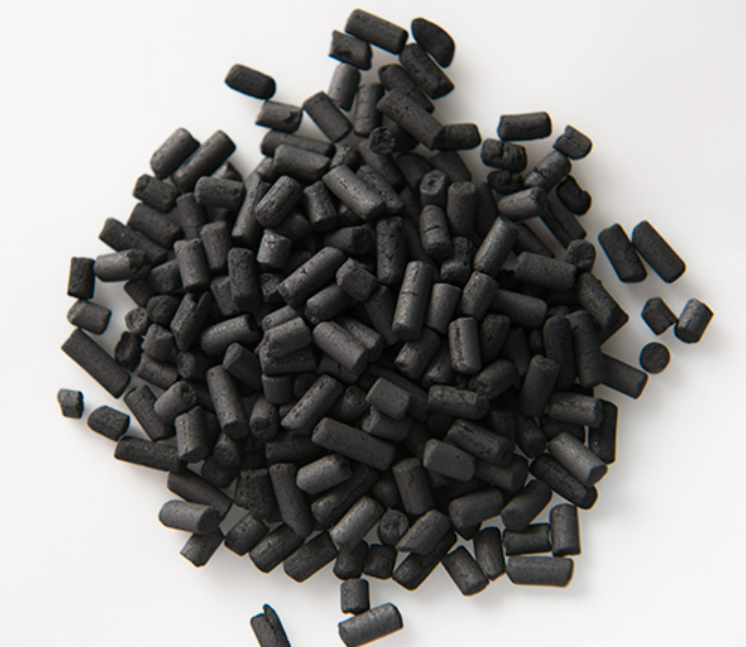Platinum-carbon catalysts (Carbon-supported platinum catalysts)
Platinum-carbon (Pt/C) catalysts consist of platinum nanoparticles supported on carbon materials, such as carbon black or graphene, to enhance catalytic activity and stability. They are widely used in electrochemical applications, including fuel cells (PEMFC, DMFC) and hydrogen production, due to their excellent efficiency in oxygen reduction (ORR) and hydrogen evolution (HER) reactions. The carbon support improves platinum dispersion, increasing surface area and reducing costs by minimizing Pt loading. These catalysts are crucial for clean energy technologies, offering high performance while addressing durability and cost challenges in industrial and automotive applications.
Princeton Powder is a leading supplier of Platinum on carbon catalyst. Platinum-carbon catalysts are for sale in bulk.
Material | Platinum on carbon catalyst, Pt/C |
Carrier/Support | Powdered activated carbon Columnar activated carbon Flaky activated carbon Unshaped granular activated carbon |
Carrier material | Coconut shell, coal, wood, peat and so on |
Appearance | Black powder |
| Pd content | 0.1% ~ 30% |
CAS Number | 7440-05-3 |
Description of Platinum Pt on activated carbon
Application: Platinum-carbon catalysts can catalyze the hydrogenation of most functional groups, and have high activity for the hydrogenation of C=C, C=0, and C=N. In contrast to Pd, it does not cause isomerization and double bond movement. It is not easy to cause hydrogenolysis and can be used for the oxidative dehydrogenation of alcohols and alkanes.
It has the characteristics of high hydrogenation reduction, good selectivity, stable performance, small feed ratio, repeated use and easy recycling. It is widely used in the hydrogenation reduction refining process of petrochemical industry, pharmaceutical industry, spice industry, dye industry and other fine chemicals.
Application times: Depends on the specific reaction (such as reaction temperature, pH value of reaction medium, etc.)
Packaging: Can be packed according to user requirements.
Description of Pillared activated carbon
Application areas: Mainly used for fixed-bed reactions with large production capacity and output, such as nitro reduction, double bond hydrogenation, dechlorination, debenzylation, ester hydrocracking, heterocyclic hydrogenation, ketoamine condensation, etc., which have the advantages of large output, high degree of automation, and low labor and production costs compared with kettle reactions to a certain extent.
Catalyst life: Depends on the specific reaction and the specifications of the fixed bed unit
Technical Parameters
Product Name: Platinum on carbon, platinum on carbon catalyst, Platinum on activated charcoal
CAS No.:7440-06-4
Tags: Pd 101, Pd 103, Pd 105, Pd 107, Pd 110
Palladium content: 0.1%~30%
Carrier material: coconut shell, coal, wood, peat, etc.
Powdered activated carbon
Specific surface area (m2/g): ≥930
Metal surface area (m2/g): 85 ~105
Average particle size of carrier (μm): 15, 20, 30, 50, 80, 100 (adjustable according to specific application reaction type and filtration equipment)
Impurities (m%): Cu, Fe, Cr, Ni, Ag, Mg and other impurities ≤ 0.3
Particle strength (m%): ≥ 90
Moisture content: 0.1%~65%
Ash content (m%): ≤5
Pillared activated carbon
Columnar activated carbon: diameter 0.8-4mm, length 2-8mm;
Flake activated carbon 4-6 mesh, 6-8 mesh, 8-12 mesh;
Amorphous granular activated carbon 10-40 mesh
Specific surface area (m2/g): 750-1320
Pore volume (ml/g): 0.35-1.0
Pore size (nm): 1.5-25
Bulk density (ml/g): 0.44-0.75
Compressive strength (N): 20-85
Platinum on carbon catalyst scholar article
Preparation of platinum on activated carbon
Abstract: In a study of the preparation of Pt/C catalysts, a set of modified activated carbon carriers has been prepared by nitric acid or air oxidation, or thermal decarboxylation. The carbons obtained by these methods had largely identical pore structures, but differed considerably in surface chemistry. A series of activated carbons with different surface chemistry was impregnated with aqueous hydrochloroplatinic acid solutions. Upon impregnation, the carbon reduced a certain amount of the PtIV complex to PtII, which was strongly chemisorbed at the walls of the carrier’s mesopores.

